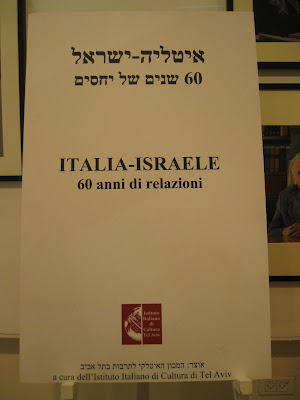.
With thanks to Robert Geiss at daily athens photo for prodding us to take the
PsalmChallenge every Sunday for the past 68 weeks.
We in his meme group will come back to our psalm illustrating again in September, God willing (and Robert willing).
.
PSALM 68To the leader. Of David. A Psalm. A Song.
1 Let God rise up, let his enemies be scattered;
let those who hate him flee before him.
2 As smoke is driven away, so drive them away;
as wax melts before the fire,
let the wicked perish before God.
3 But let the righteous be joyful;
let them exult before God;
let them be jubilant with joy.
4 Sing to God, sing praises to his name;
lift up a song to him who rides upon the clouds—
his name is the Lord—
be exultant before him.
5 Father of orphans and protector of widows
is God in his holy habitation.
6 God gives the desolate a home to live in;
he leads out the prisoners to prosperity,
but the rebellious live in a parched land.
7 O God, when you went out before your people,
when you marched through the wilderness,
Selah
8 the earth quaked, the heavens poured down rain
at the presence of God, the God of Sinai,
at the presence of God, the God of Israel.
9 Rain in abundance, O God, you showered abroad;
you restored your heritage when it languished;
10 your flock found a dwelling in it;
in your goodness, O God, you provided for the needy.
11 The Lord gives the command;
great is the company of those who bore the tidings:
12 ‘The kings of the armies, they flee, they flee!’
The women at home divide the spoil,
13 though they stay among the sheepfolds—
the wings of a dove covered with silver,
its pinions with green gold.
14 When the Almighty scattered kings there,
snow fell on Zalmon.
15 O mighty mountain, mountain of Bashan;
O many-peaked mountain, mountain of Bashan!
16 Why do you look with envy, O many-peaked mountain,
at the mount that God desired for his abode,
where the Lord will reside for ever?
17 With mighty chariotry, twice ten thousand,
thousands upon thousands,
the Lord came from Sinai into the holy place.
18 You ascended the high mount,
leading captives in your train
and receiving gifts from people,
even from those who rebel against the Lord God’s abiding there.
19 Blessed be the Lord,
who daily bears us up;
God is our salvation.
Selah
20 Our God is a God of salvation,
and to God, the Lord, belongs escape from death.
21 But God will shatter the heads of his enemies,
the hairy crown of those who walk in their guilty ways.
22 The Lord said,
‘I will bring them back from Bashan,
I will bring them back from the depths of the sea,
23 so that you may bathe your feet in blood,
so that the tongues of your dogs may have their share from the foe.’
24 Your solemn processions are seen, O God,
the processions of my God, my King, into the sanctuary—
25 the singers in front, the musicians last,
between them girls playing tambourines:
26 ‘Bless God in the great congregation,
the
Lord, O you who are of Israel’s fountain!’
 27 There is Benjamin, the least of them, in the lead,
27 There is Benjamin, the least of them, in the lead, the princes of Judah in a body, the princes of Zebulun,
the princes of Judah in a body, the princes of Zebulun, the princes of Naphtali. 28
the princes of Naphtali. 28 Summon your might, O God;
show your strength, O God, as you have done for us before.
29 Because of your temple at Jerusalem
kings bear gifts to you.
30 Rebuke the wild animals that live among the reeds,
the herd of bulls with the calves of the peoples.
Trample under foot those who lust after tribute;
scatter the peoples who delight in war.
31 Let bronze be brought from Egypt;
let Ethiopia hasten to stretch out its hands to God.
32 Sing to God, O kingdoms of the earth;
sing praises to the Lord,
Selah
33 O rider in the heavens, the ancient heavens;
listen, he sends out his voice, his mighty voice.
34 Ascribe power to God,
whose majesty is over Israel;
and whose power is in the skies.
35 Awesome is God in his sanctuary,
the God of Israel;
he gives power and strength to his people.
Blessed be God!
----------------------------------------------
Photos:
Four of the 12 tribes of Israel as portrayed by Marc Chagall in four of his 12 stained glass windows at Hadassah Medical Center synagogue, Jerusalem.
You can click once on the photos and then click again to see the artwork up close.
.
Translation used today:
NRSV.
.
Rabbi Segal notes that "
Psalm 68 is widely acknowledged to be the most difficult psalm to translate and to interpret. It includes thirteen terms found only here in the Bible, historical “references” otherwise unknown, and phrases which read awkwardly at best.".
 Then I remembered a little place with an old wood-burning heating stove, and I recalled a cold and windy day last January when I took this picture:
Then I remembered a little place with an old wood-burning heating stove, and I recalled a cold and windy day last January when I took this picture:

























 (Hoping this quick look at the corner of Agron and King David Streets will qualify as a tour for
(Hoping this quick look at the corner of Agron and King David Streets will qualify as a tour for























